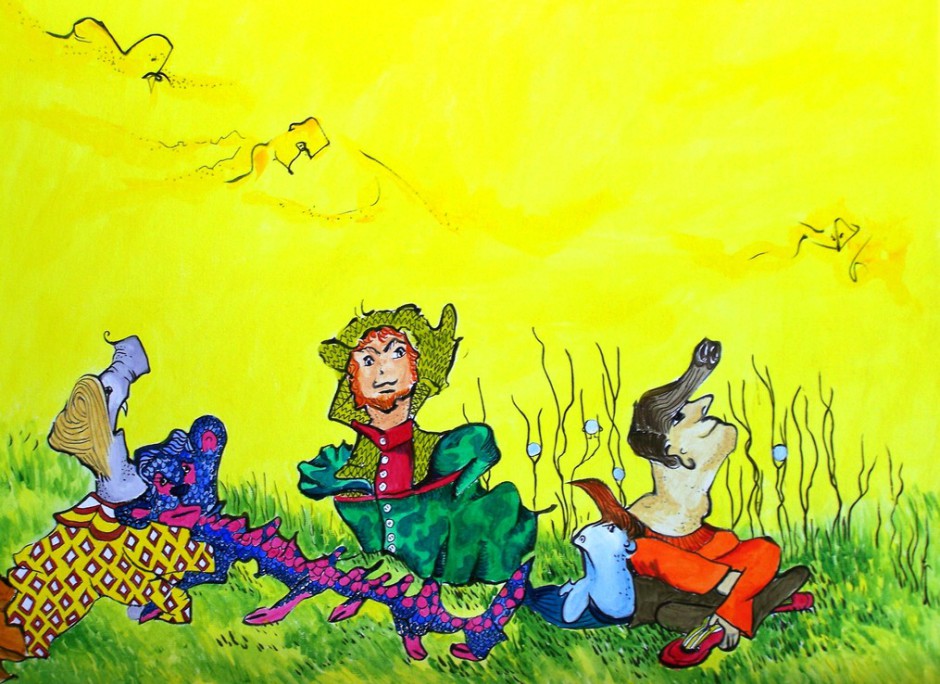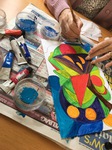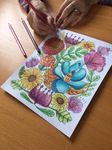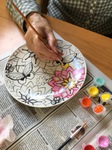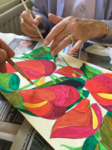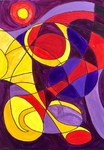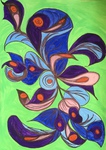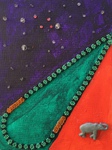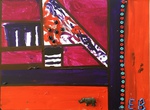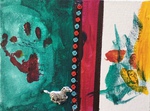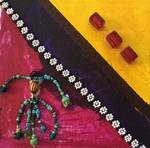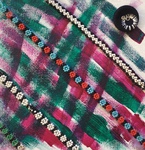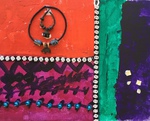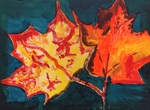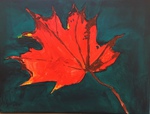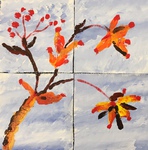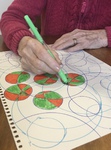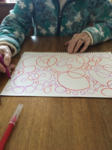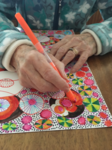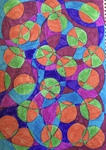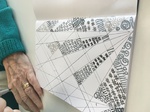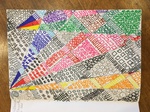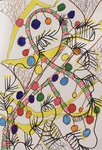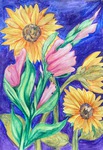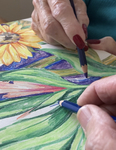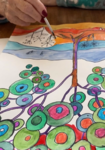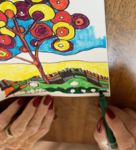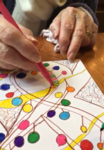My explorations into Memory and Dementia.
While studying for my degree in Fine Art I became fascinated with the subject of memory, and the deterioration thereof. My brother had just been diagnosed with dementia, which broke my heart as he already had brain damage from a car accident, and Schitzophrenia.
At the time Anthony Gormley was embarking on his 'One and Other' art installation on the fourth plinth in Trafaga Square. I went to London and spent 24 hours in Trafalga Square, drawing and painting.
Afterwards I went back to uni and created a very large, wall size, drawing, too big to photograph, that required me to draw from memory, everything that I could remember that was happening in the square, in that 24 hour period. I worked outwards from one photograph. I allowed my memories of living in Africa, and preschool teaching, to creep into the drawing, symbolising how muddled and confused thinking can become with the onset of dementia. I soon discovered that my memory was limited and fading. So I drew captured moments from photographs that I had taken. I only allowed myself to look at the photo momentarily, then rely on the short term visual memory, to complete the section.
After several months of drawing, when I was satisfied that I had finished, I went about destroying it, slowly, as dementia does. Bit by bit it was obliterated, I threw ink at it, which symbolised how chunks of the memory can be lost into what must seem like a black hole. I pasted tracing paper over parts of it, so that some of the drawing faded slowly. I tore bits away replicating the ripped up feeling and frustration sufferers must feel as they can no longer recall events or faces. Eventually everything was gone. Not a trace of the actual drawing left. Just these few photos taken in bad lighting on an Iphone.
Art Therapy
My studies and interest in art as therapy led me to work collaboratively with some friends who have dementia. I have devised non threatening, relaxed activities that result in colourful work that not only looks pleasing but is fun to do. I have also had the privilege of working with a lady and gentleman who suffered a stroke, and my daughter-in-law who is visually impaired. I am currently working in a care home as an activities co-ordinator. I have enjoyed bringing art to the residents who are well into their 80's and 90's. Some enjoy participating, others just watching. All have enjoyed art apreciation stimulation.
Visually impaired
Stroke victims
Fronto temporal dementia.
Alzheimer's / Dementia
Multiple Sclerosis
'Imagination is more important than knowledge'. Albert Einstein
'Creativity is intelligence having fun.'
Albert Einstein
'Disneyland will never be completed.
It will continue to grow as long as
there is imagination left in th world'
Walt Disney
PAREIDOLIA, in a nutshell, is the ability to see faces, or other things, where there isn't one.
In his notebooks, Leonardo da Vinci wrote of pareidolia as a device for painters, writing "if you look at any walls spotted with various stains.... if you are about to invent some scene you will be able to see in it a resemblance to various different landscapes adorned with mountains, rivers, rocks, trees, plains, wide valleys and various groups of hills. You will also be able to see divers, combats and figures in quick movement, and strange expressions of faces, and outlandish costumes, and an infinite number of things which you can then reduce into separate and well conceived forms."
Wikipedia
These imaginings, or seeings, with the aid of drawing, become my Gazoonkas
Fran Webster's Art
More of my work can be viewed on Redbubble.
http://www.redbubble.com/people/franwebster
and on my face book art page
http://www.facebook.com/FranWebstersArt
and frantuckster on Instagram
